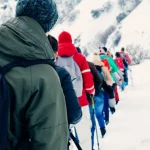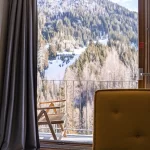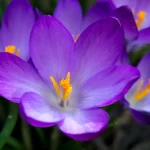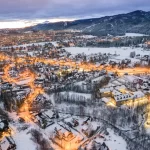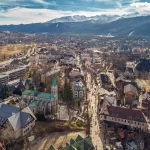Safety in the mountains in winter
Safety in the mountains in winter
Many people go to Zakopane in winter. They want to feel the atmosphere of the town and experience a real, snowy winter. Some also plan trips to the Tatras at once. Already before holiday, they put together equipment, they reserve accommodation in mountain shelters. But some people decide to go to the mountains spontaneously. The proximity of the mountains is tempting, in sunny weather you can see them from many points of the city. They seem to be easily accessible, and their attractiveness is legendary – you can hear and read about the total silence, the world’s freshest air, views that you have to see with your own eyes to believe that they really exist. Unfortunately, spontaneity does not always go hand in hand with responsibility and common sense. Mistakes can happen to everyone, but it’s worth remembering that consequences of them can be different. Forgetting to charge the phone in the lowlands and in the mountains is a completely different caliber of neglect. In the first case, someone may be offended, because we do not call back for long, in the second – it can cost the loss of live. Many things that seem obvious to people familiar with the mountains, especially those who live permanently in their proximity – for a newcomer from a completely different region of the world may be a surprise. Therefore, once again, we will remind you of some of the most important principles that are worth having in your head before we start planning a winter exploration of the Tatra Mountains. That everyone who reads these words will come back home with only good memories.
Think about it well and do not count on a miracle
Trips to the Tatras, equally summer and winter, need to be planned in advance. What differentiates winter from summer is more factors that we have to take into account, check and buy before our leg takes the first step on the trail.
In the summer we check the weather forecast for the Tatra Mountains – not for the city, Zakopane – on several portals. We take into account not only the temperature, but also the strength of the wind and the degree of insolation, we calculate with a large margin the time needed for the passage of the trail and complete convenient and protecting us from the cold, rain or sun clothes. We take a map, a charged phone, and if the battery tends to discharge quickly, it is also a powerbank. Water, some food that will not cause stomach sensations, message to a trusted person, to inform where we go and when we plan to return more or less (with a promise of contact when we are safely off the trail). And basically we can go, even alone.
In winter, the case looks more complicated. First of all, we need to constantly monitor avalanche danger messages. They are available on the website of the Tatra National Park: tpn.pl Only in Polish, unfortunately, so we need to use translator, but it is absolutely worth the small effort. And absolutely should not be underestimated. Already “second level” means that the avalanche can go down under the influence of a small load. Level 3 and 4 are a good enough reason not to go up at all. Just. We should consider how much we have to lose, what will happen if we would not return from mountains tomorrow evening. Without great exaggeration and exaltation, or the desire to scare anyone – that’s how you have to catch it. The risk is huge. Under these conditions, even not every valley is safe. Avalanche training conducted most often by mountain rescuers is best option for us. If we do not want to invest like that – let’s stop the trips to the mountains when the risk is bigger than “level one”. And weather forecasts? It is not enough to read them. You still have to respect them and do not count on the fact that it may not work. For safety, let us assume that it will be slightly worse than expected by the forecaster. Strong wind significantly reduces the perceived temperature. Snowfall limits visibility and erases tracks. Fog can make you lose orientation in the field. Even if, with bated breath, we follow the news about climbers on K2 in the winter and want to test our strength in extreme conditions, let us remember that the real success is to reach the base rather than risking health and life in the name of a romantic adventure.
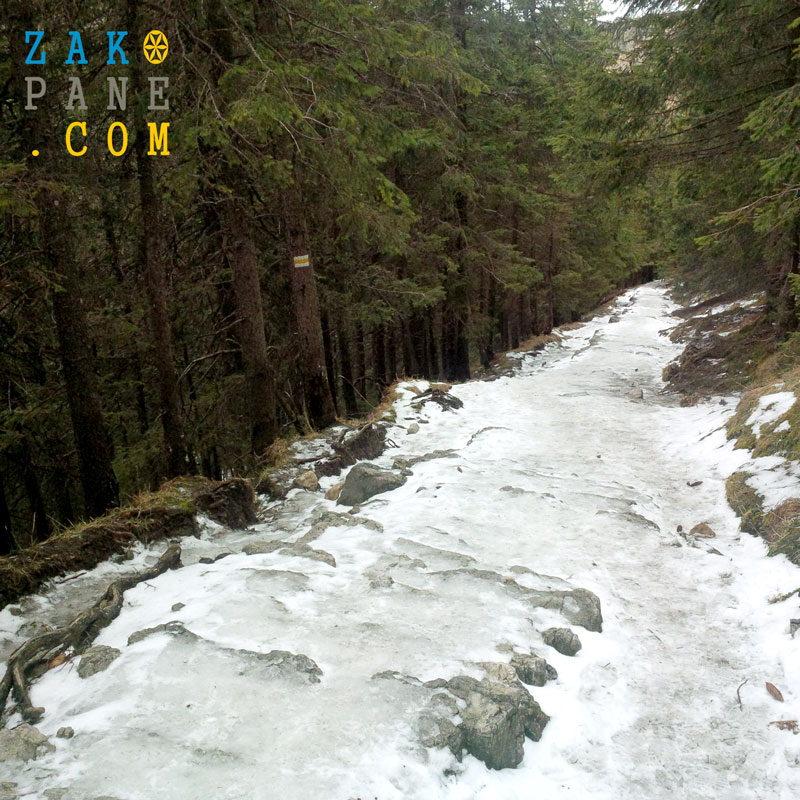
Necessary equipment – buy or borrow
As for the necessary purchases, their list will be longer in the winter. Even during a walk to Hala Gasienicowa the easiest trail from Brzeziny, we will need a thermos not to drink ice water. Going uphill, we will probably get rid of a lot of clothes, but going down can be really cold, especially after dusk, so chemical heaters for hands and feet will be useful. You can buy them in sports stores and some pharmacies, f.ex Super-Pharm. A second pair of socks and gloves will also be useful when you soak the first ones. Gaiters, calf and ankle protectors, protect against snow falling into the shoes. We can also consider replacing typical trekking boots with snow boots with non-slip soles. It is very warm in them, they do not get wet, the ribbing on the top in the knee-high models protects against snow falling. However, they do not stabilize the ankle, so they are for people with very fit joints and tendons. That’s enough for a trip along the route we wrote above. But, for example, trail to the Czarny Staw Gasienicowy will be difficult to reach without crampons, it runs a narrow path along incline of hill and it is easy to lose contact with the ground while passing another person. Crampons will also be useful on the seemingly easy route of the Dolina Roztoki (Roztoka Valley), and anti-slip pads we can use even on the upper section of the asphalt road to Morskie Oko, which, of course, is not sprinkled with salt or even sand.
Poles, which in the summer often only distirb, in winter, on the contrary, will facilitate digging through the snow, keeping balance on slippery approaches. Alpenstock – this is a high-school of trekking, certainly not for those who are in the winter for the first time. Winter equipment can also be borrowed, shopping time will come when we are truly fascinated in winter trekking. Generally, this must be emphasized very much – the possession of equipment itself is not enough to feel safe in the mountains in the winter. You still need to be able to use it. This rule applies in particular to a set called “Avalanche ABC”, without which we should not move on potentially avalanche terrain even with the “only” second stage of avalanche risk. It consists of a detector, probe and shovel. If we do not see the point in buying it, we can rent it, for example in Kuznice, in a ski rental shop, but renting will not help us much, if we do not know how to use it first.
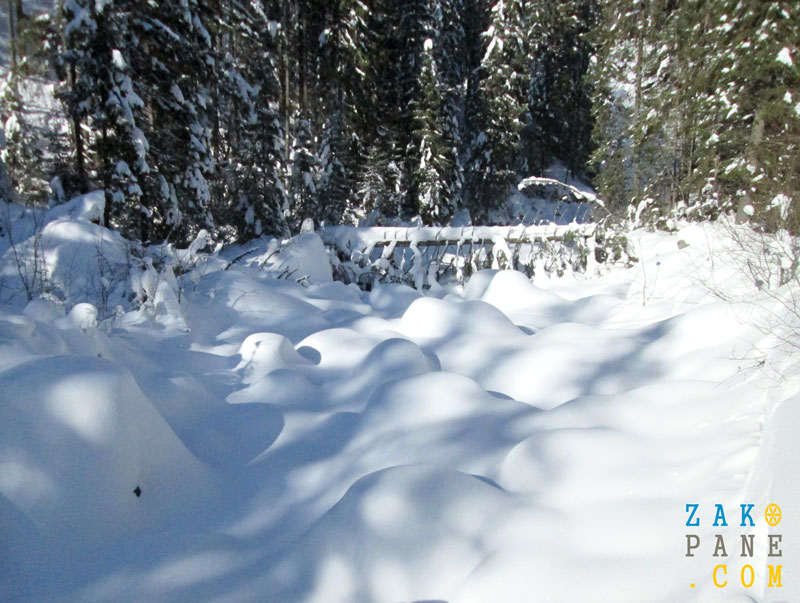
Do not count on the moonlight
What is the difference between winter and summer? Even the length of the day. Darkness in the shortest days of the year is already about 15:30. For this reason, in the Tatras, it is allowed to move in the winter after the darkness falls. This is often a must if the selected route is too long to stay within 8-9 hours of daylight. Especially, that in winter, we pave the way in the snow, so we move much slower. And now – the most important. If you do not have a flashlight, headlamps with a long beam of light and high resistance to moisture, with a battery reserve – do not go out on the trail at all. Even if you think that you will be able to come back during the day. Even if you want to catch only the Morskie Oko following asphalt road. You never know what will happen, under what circumstances you will find yourself. The mobile phone flashlight is inconvenient, blocking one hand, blocking f.ex., using poles or moving where a wise man uses four limbs, instead of two, in a difficult terrain. A great, strong headlamp can be bought not only in a sports shop, but even in an ordinary supermarket, and prices start from a dozen or so zlotys, so there is no justification for the lack of this part of the equipment.

Do not get lost
What distinguishes the winter mountains from the summer is also the lack of visible marking of trails, only the poles are visible from the snow, some routes are closed, there are winter bypasses – mainly due to the avalanche danger. Therefore, if we do not have the opportunity to wander with someone who already knows the route, do not go on a less-frequented route, where even we will not have a chance to ask someone how to continue. Messages on changes in routes, closures of entrances to the park due to difficult conditions, etc. can be found on the TPN website. Again, only in Polish, so we can use translator or simply ask somebody for help – on reception in our hotel everybody should know English. It is worth mentioning that in winter you can move around the surface of ponds, such is the route, for example, the trail to Rysy – but you must urgently follow the messages about the thickness of the ice cover and strictly adhere to the ban on entry. It happens, especially at the beginning and end of winter, that park employees are standing on the edge of Morskie Oko and informing about the threat. If they are not there and we want to be safe – let’s ask in the shelter.
Who will unearth you from under the snow?
Talking about the companions of the trip, it is also worth mentioning that while in the summer you can take lonely trips and many people cannot imagine a different way of exploring the mountains, in winter, especially in avalanche danger, outside the forest – it is a much greater risk. Few people are able to free themselves from the avalanche, you have to have a lot of luck, and even better backpack known as ABS Airbag, which is very expensive. But effective also, if we do not lose our head and we will be able to pull link in a few seconds to activate the air supply to the cushions fixed in the backpack. Well, we have to have it on our backs, and not put off somewhere on the side, because we just left to catch a super shot. A companion who has an avalanche set and is able to use it greatly increases our chances of survival, and for this reason you should not go too close to each other. If avalanche cover all the participants of trip at the same time, the chance of even calling for help will be similar to those of a lonely escapade, which is very low.
TOPR is not a taxi, so give yourself a chance
We came to the help topic here. Many people finding out that there is a great TOPR institution, (that is the Tatra Volunteer Rescue Service )feel completely safe and free from responsibility for their behavior. After all, whatever happens, rescuers will get into a helicopter and arrive to help. Unfortunately, this is not how it works. If there are bad weather conditions, snowstorm, fog, strong wind – the helicopter will not fly. Also after dusk it will move in absolutely exceptional cases. The rescuers themselves do not usually use the option of refusing to leave for the action, it is related to the nature of their service, but it is worth remembering that they have such a possibility, and the leader of the rescue action may also take this decision – if the risk of losing health and life by rescuers is too great. In the case of an avalanche – practically there is no chance that the rescuers reach the snow buried person in the first eighteen minutes, and these are crucial, later the completely buried man begins to choke. We will not use the help of rescuers easily and quickly, if we have lost any orientation in the field, we do not know where we are, we do not have a map, a compass, the phone has been unloaded. The rescuers cannot help us if we are dressed in the wrong way, so until they get to us on foot over the snow, until they will bring a thermal film and a warming drink, we will have to wait for them in dress we have – if it occurred to us to go in the mountains in jeans trousers, which freeze to the body in the frost and snow, if we do not have a cap, waterproof and windproof jacket, but we have sneakers on the legs, which looked so good in winter in the city, especially in combination with bare ankles … it is our own fault.
Think about the safety of others
You can often hear that leaving the mountain shelter you should leave a message where you are going and what route. In practice, this information is not collected, only the mountaineers are part of the book of exits. But it is our duty to notify someone else, even in the other country, about where we are going. We can also do it in our hotel or guest house. And please, inform this person about changes in plans or unexpected events that will not allow you to return to your place of residence at the agreed time. Even if nothing happened, and our return is delayed, because we are sitting in a tavern with a newly met, cheerful team. Let’s think that maybe someone has already started emergency services, that rescuers risk their lives by breaking through potentially avalanche terrains with trained dogs – and at the same time we are sipping the mulled wine joyfully.
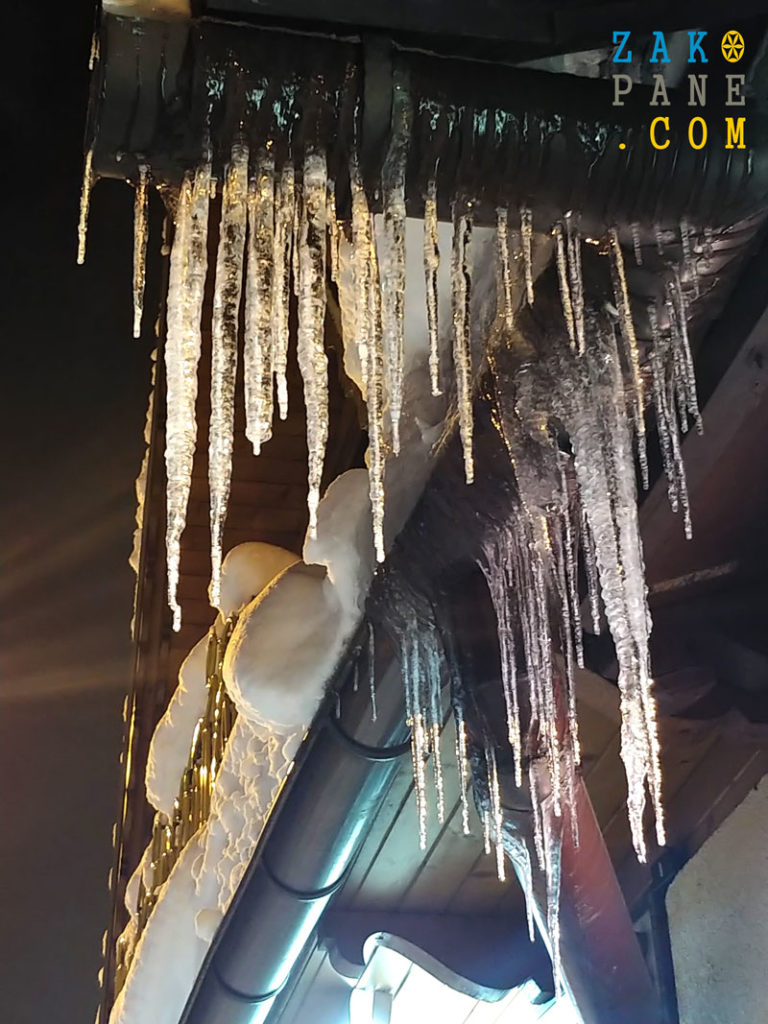
When transport is missing
What else should be taken into account in the winter? Our strength. Wading in the snow, even if only for the ankle, requires much more physical fitness from us. And even more, if we want to get into one of the Czerwone Wierchy peaks in winter and snow can be hip-deep. Think twice before planning a challenging trip with small children. When planning a route, let’s also take into account the limited traffic of horse-drawn carts and sleighs on the way to Morskie Oko, maybe all the way will have to be covered on foot in both directions. If we are not travelling by car, in detail let’s check the bus routes from the parking lots next to the trails, so as not to be surprised that we have no way to get to our place of residence, or we need to call a taxi for PLN 200 – in winter, bus drivers, f.ex. at Palenica Białczanska, do not wait for stragglers until 21, the last departures are around 18.
Do not tease the bear
To sum up – there are no jokes with the mountains. Neither in summer nor in winter. There can always be unpredictable things. For example, in the winter, the most dangerous of the Tatra animals, bears, should sleep deeply. And yet, sometimes they wake up and we can meet them in the middle of the road. They can be irritated, confused, and if – instead of calmly move away – we will panic, start shouting, run – the meeting may have dangerous consequences. It may also happen that the route, which someone recommended to us a year ago as easy and friendly, this year is overwhelmed, you have to pave your way with difficulty, or is blocked from trees felled by the strong wind.
Do not hesitate to resignate
Does this mean that in winter, the Tatras should be simply avoided, better is leave trips only to advanced mountaineers, and limit yourself only to take the cabin lift to Kasprowy Wierch peak? Of course not. However, it will be right to always have a Plan B, another option to spend time – not to be crazy about the idea of going to the mountains, if everything around is not conducive to us and even calls us to stay at home. Prudence will not bring us down. However, none of us wants to become the hero of a complicated rescue operation, which might not be necessary if we came to the mountains with greater humility.
Or maybe you should look for a guide?
It is worth emphasizing that although on all portals dedicated to mountain tourism we can find advertising photos of groups of smiling people standing on the ridge with a stunning view of snow-capped peaks, of course in full sun – in fact, we rarely get to such weather, and the group probably reached the top after training and under the supervision of a guide. It is also one of the ways to increase our security. Of course, it costs more, but an experienced licensed guide will neither allow us bravado nor leave us alone with troubles. If, however, we want to go alone, at least make sure that we have everything necessary, we know the phone to TOPR, under which the lifeguard will receive our notification 24 hours a day.
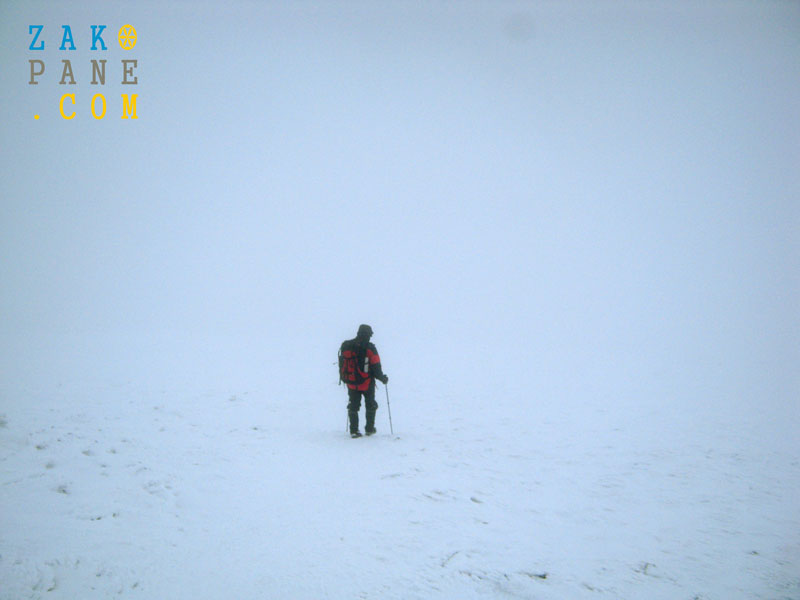
Link to the page where we can find contacts to the Tatra guides speaking in English:
TOPR website: www.topr.pl
TOPR emergency telephone: +48 601 100 300
Anna Markiewicz


